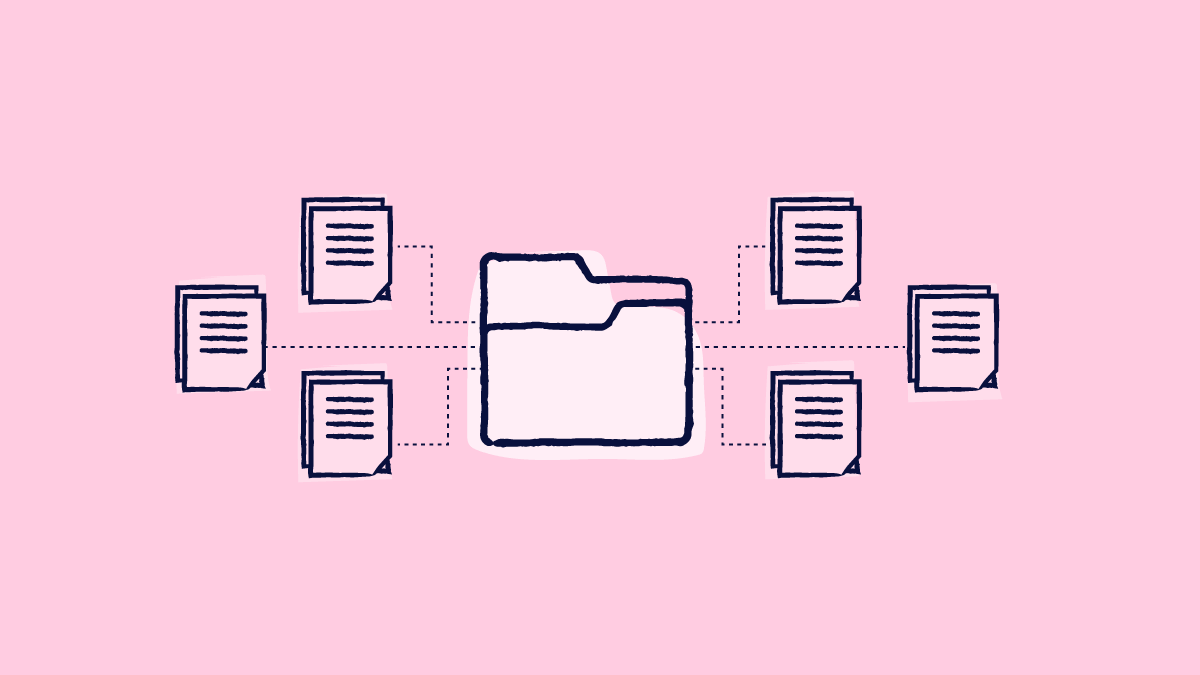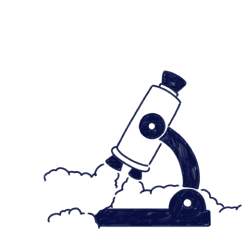
GxP regulated sectors – pharma, biotech and medical devices – manage large volumes of documentation. Securely and efficiently managing it, always in compliance with industry regulations, is essential for quality, R&D, supply chain, human resources, lab, and operation teams.
However, many companies still use paper-based systems, leading to siloed, incomplete, outdated, or lost information. In fact, it’s been reported that companies lose one in twenty documents to paper, reproduction costs reaching ca. $220 per sheet.
And beyond financial costs, missing, outdated or incomplete documentation can cause serious compliance issues, delays in review processes and even audit failures, among other issues.
What is a DMS? DMS explained
This is where document management systems (DMS) come into play. And what is a DMS? It’s a system that helps you optimize your documentation processes.
Also known as an EDMS, (electronic document management system), the terms DMS and EDMS are used interchangeably. An EDMS is a document management software, often cloud-based, that allows companies to go paperless, enabling the centralization of documents in one digital repository.
Teams can then easily and securely access, create, store, organize, trace, and share all of their digital documents, enabling improved collaboration between teams.

There are three main types of EDMS systems:
- On-premise EDMS are installed and managed within the organization's servers, giving them full control over their data, infrastructure, and security. They can be tailored to the organization’s needs to meet specific regulatory requirements.
- A cloud document management software is hosted and managed by a third-party provider in the cloud. They are more cost-effective and subscription-based. Maintenance is in the hands of the provider, making it easier to scale.
- What is a DMS that combines both? A hybrid EDMS, which has elements of on-premise and cloud-based solutions, enabling further flexibility. They are easier to escalate than a fully on-premise EDMS, and can be configured to meet specific security requirements.
What is the purpose of an electronic document management system (EDMS)?
Is your team using a paper-based system, or are your document management platforms of choice, like JIRA or SharePoint, falling short?
If you have your team still wondering what is a DMS in the dark and battling against paper, here are some common documentation management challenges that an EDMS can help you solve:
- Data security and compliance issues: Ensuring data security, safeguarding privacy, and staying compliant with regulations are top priorities for companies in the GxP-regulated sector.
- Time lost to inefficient processes: Manual processes can be extremely time-consuming, draining valuable time and resources while causing significant delays.
- Lost or incomplete documentation: Paper-based systems are prone to document loss, a frequent issue that can lead to serious consequences such as compliance breaches and audit failures.
- Limited accessibility and collaboration: Without proper infrastructure, enabling cross-team access to documents can be difficult, resulting in inefficiencies and unnecessary delays.
- Poor change control: Errors due to multiple document versions, as well as missing or incomplete files, can lead to confusion, inconsistencies, and compliance risks.
Document management system features
An EDMS could be a great first step in building a quality culture in your organization. Allowing teams to collaborate and function as the central source of truth for critical documents.

- Easy collaboration: Because all of your documents will be stored in one accessible, centralized place, all authorized employees will be able to access necessary information and easily collaborate across teams.
- Cloud-based accessibility: Many EDMS solutions are often cloud-based, providing real-time access from anywhere, which is especially valuable for international organizations with teams across multiple locations, or remote-based.
- Traceable audits: Audit trails are essential in regulated industries. Auditors will expect to see the full document journey, from drafting to archiving. Any credible EDMS must provide this thorough traceability.
- Version control: This feature allows tracking document revisions and ensures that everyone authorized has access to the latest version. It tracks every change made to a document, by whom and when, and eliminates confusion.
- Permission control: Administrators can define who can view, edit, erase, and share specific documents. This allows them to protect sensitive information and remain compliant with industry regulations such as GDPR and HIPAA.
- E-signature management: Users can sign documents digitally from the document management software, without needing to print or scan, accelerating approvals and avoiding issues with physical documents.
- Compliance: Some EDMS systems are validated to meet regulatory requirements like 21 CFR Part 11 and EU Annex 11, ensuring adherence to GxP guidelines.
Is cloud document management software sufficient for regulated industries?
Although a robust EDMS solution has the key elements for GxP-regulated companies to efficiently manage documentation, it’s not a complete solution on its own, but an isolated element within a full quality management system.
Teams who may wish to boost their entire quality management process might require more comprehensive software.
This software should include full regulatory compliance solutions, user training, audit management, Corrective and Preventive Actions (CAPAs), and design controls, among others, which cannot be found within an EDMS platform.
What is a DMS compared to an eQMS?
One solution that addresses these lacking solutions is an eQMS (electronic quality management system), which comprehends the entire quality process from start to finish.
What is a DMS, and how does it differentiate from an eQMS?
An EDMS system is a dedicated solution for documentation management, specifically allowing teams to easily centralize, access, manage, and prioritize their documents.
On the other hand, an eQMS will help you optimize and upgrade your whole quality management system, from beginning to end.
Most eQMS contain all the features that a well-stacked EDMS system offers, and more, namely:
- Quality system analytics: Tracks and analyzes quality data to identify risks, supporting regulatory compliance and continuous improvement. It offers insights into audits, CAPAs, deviations, change controls, and other QMS elements.
- User training: Ensures that staff members are adequately trained and qualified to perform their roles in compliance with regulatory standards and internal procedures. Includes onboarding, role-based, training updates, and periodic competency assessments.
- Supplier management: Encompasses the selection, qualification, monitoring, and evaluation of external vendors that provide materials or services critical to product quality and compliance. Includes approved supplier lists, audits, supplier performance tracking, nonconformance management, etc.
- Full regulatory compliance: Ensures all operations align with applicable regulatory requirements such as FDA, ISO, and GxP standards by implementing documented procedures, regular internal and external audits, risk assessments, and real-time monitoring.
- Quality process management: Establishes and oversees standardized workflows for critical quality activities such as CAPAs, audits, deviations, complaints, and change controls, to ensure consistent execution and traceability. As well as reducing risk, improving efficiency, and fostering a culture of quality.
- Design controls: A systematic approach to product development that ensures medical devices or life sciences products meet quality standards. An essential feature to ensure product safety, effectiveness, and compliance with standards such as ISO 13485 and 21 CFR Part 820.
Recommended learning: Discover the most important elements that a good eQMS should have.
Conclusion: choosing between eQMS and eDMS
So, when should you buy an EMDS or an eQMS? It depends on your organization and operational needs.
Let’s start with EDMS. Why should you choose one to handle documentation?
EDMS platforms offer less features than an eQMS, only covering document management. This makes them more affordable and easier to set up.
It is ideal for younger companies that might not yet require complex features such as staff training, CAPAs, or supplier management, but might instead be in the market for a system to manage documentation standards such as FDA, ISO, or 21 CFR.
However, even small companies can reap greats benefit from implementing an eQMS early by laying a strong foundation for quality management and compliance from the start, scaling with the system as their needs grow. Many trusted eQMS providers like Scilife offer flexible packages that adapt to your size and specific needs, so you don’t end up paying for fancy features you don’t need.
Evidently, more established companies with more quality processes in place should opt for the vast array of features offered by an eQMS.
If an EDMS is a dedicated solution for a specific need, an eQMS will offer a holistic approach to quality, equipping you with powerful features like streamlined CAPA workflows, change controls, risk assessments, and audit management, among others.
Fully-stacked eQMS such as Scilife will cover the whole quality lifecycle from beginning to end, providing a robust framework that supports all necessary quality processes, helping you future-proof compliance, and ensuring quality standards are met at all times






